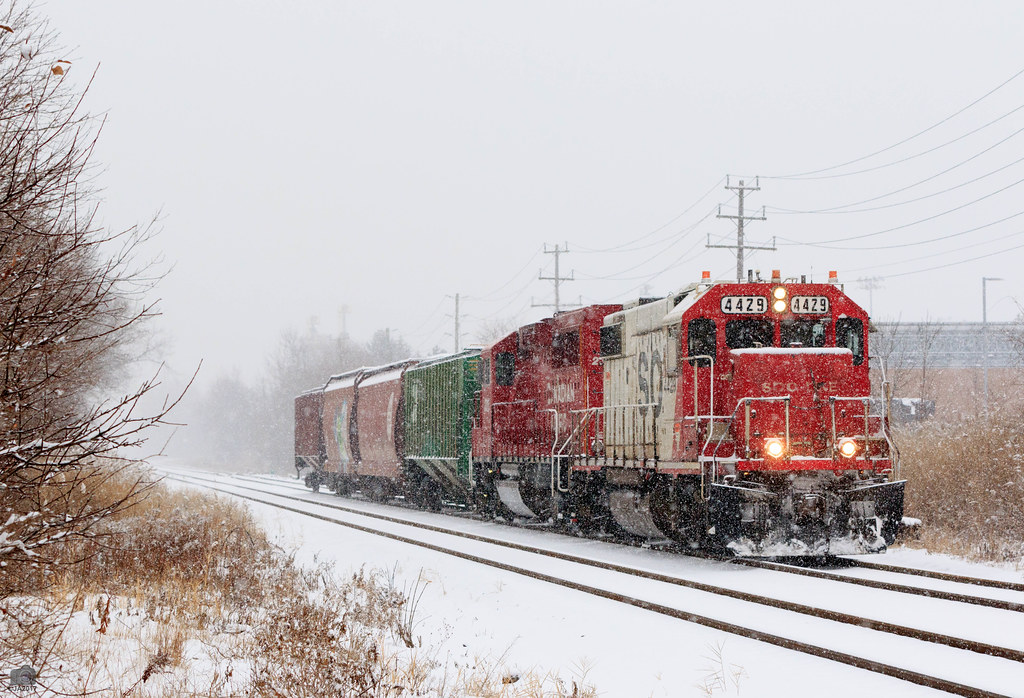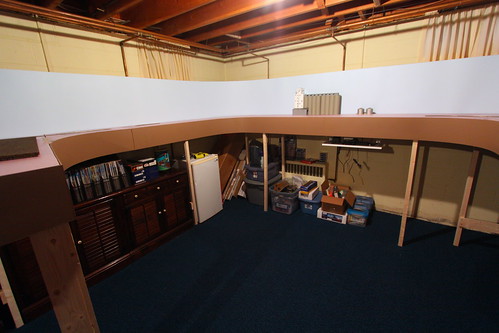Some progress to report
Greetings, the snow is starting to fall so it's officially model railroad season. I've managed to make some small progress on my layout in the past few weeks. Here's a summary.
Tweaking the track plan
I felt the layout would operate better if there was some "off layout" staging on the peninsula. That way a train could start on the workbench (east) staging move through the layout and exchange cars, then head to the staging track on the peninsula (west staging). I have more rolling stock than can operate on the layout at once (anyone else?) so I want to put a drawer under the layout beneath the staging tracks so cars can come on and off the layout.
The trackplan on the home page does not yet reflect these changes, but what I also wanted to do was divide the peninsula with a view block, separating Korex from a two-track staging yard. But to do this I really needed to lengthen and widen the end of the peninsula. Which brings me to the point below:
Move to extend, widen the peninsula
I decided that the original peninsula width (21 inches) was too narrow to accomplish what I wanted. So I extended it two feet in length and widened it about eight inches at the end and tapered that back to the 21 inches. About six inches of the peninsula will be a two-track staging yard and Korex will be on the other side of the scene divider.
I want to try and model Korex true to its size, but as a background building. The prototype has four siding tracks and at any given time there can be up to a dozen hoppers at this industry, including the off spots. I may have to crunch that down a bit, but I don't like having all small industries, even on a small layout. Here's an aerial shot of Korex:
 |
| This is an aerial of Korex from the west. You can see it's a large industry that takes plenty of plastic pellet hoppers. |
Here's a shot from the ground level where the tracks diverge:
Adding a hill to the "back turn"
 |
| The hill begins to take shape. I'm considering adding a drainage ditch between the track and facia you see at the left. |
While I was waiting to get some lumber to re-jig the peninsula, I decided to fill the area between the back turn of the "U" and the backdrop. I used left-over foam insulation and covered it with Sculptamold.
 |
| This is the start of the hill. The south wall is to the left, the west wall is straight ahead. |
This is the first time I've done any scenery but I'm fairly happy with how it turned out. I found the Sculptamold a bit dry at the suggested mixing instructions, so I added more water. Upside: it spread more smoothly. Downside: it took forever to dry. Next time I'll stick to instructions. I think it's supposed to be that dry.
 |
| This is the hill after the Sculptamold was applied. The camera light meter wasn't set right here so it's hard to see the detail in the white Sculptamold here. |
I worked left to right and the first effort was much lumpier than where I finished up on the right side. Next step is to cover it with some tan latex paint and ground turf, foam, etc. I'd like to add a shallow drainage ditch between the track and facia in this area.
What's next?
Here's a brief list of what I hope to accomplish in the next few weeks.
- Build the scenic divider for the peninsula.
- Figure out where the buildings and road will go on the left (non staging) side of the peninsula.
- lay track on the peninsula, wire and test it. This will mean the entire layout (aside from the east staging) is operation.
- Cut and contour the shape of the drainage ditch.
- Get the facia attached to the layout.
- I may also paint the foam all over the layout, with plans to scenic it later. The pink is driving me nuts!
I love to get comments. Come back for future posts, in which i will introduce the layout's motive power.
Happy modelling.





























